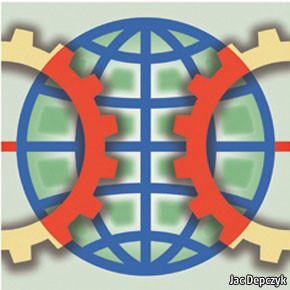 
 字體:小 中 大
字體:小 中 大 |
|
|
|
| 2019/11/16 01:42:33瀏覽101|回應0|推薦0 | |
下圖為筆者在暑假至台北市新光華商場的1樓短暫上班的acer攤(茂訊電腦CRETE),所展示的電競座艙Predator Thronos(原文網址: 宏碁電競四天王亮相!MR頭盔、電競座艙、360度翻轉螢幕筆電開新局 | ETtoday3C家電 | ETtoday新聞雲 https://www.ettoday.net/news/20180830/1247265.htm#ixzz65SLTKt7g),要價有現金三十萬左右,要從今年六、七月訂貨,至十一月多(好像是現在)才發貨。客製化,處理器是第八代桌機款中頂級的,而且三個27吋4K螢幕可連動,也可調螢幕高低,坐椅有140度的轉動角度。 這篇作回答的時候,筆者馬上調閱在2010年的五月,至三民書局購買的美商麥格羅●希爾,兩本「當代中國經濟改革」,2005年由吳敬璉著作,及2003年蔡昉、林毅夫作的「中國經濟」(均為繁體中文版)。後者內容裡面有一篇,以日本國為例,討論公眾播放的HDTV畫質(數位還是類比),和私人企業研發能力技術是否有夠格,與政府法規是否相符、補助款是否到位作討論,亦即也涉入了公私協力合營的問題,也要注意市場,對於電視台(比如NHK)畫質,加上節目內容適切與否的反應。 筆者在作回答時,以當今普及化,而改良數代後品質仍然卓越於其他LED的OLED來說。出生於香港的鄧青雲博士是在1979年時,發現OLED有機發光半導體,作為功能強大,對環境較無害的材料,普及於電腦、電子設備等處,影響仍然深遠。而日本從1960年代開始研發類比以外數位訊號,有工業主-官員和-學術界三角的合作關係,在將進入1990年代之際,開始提倡電視台播放數位化。日本有經過了30年的努力,到今天有升到了MPEG-2播放水平,4K的電視機來播放是還滿恰當的。台灣的播放是六年前開始數位化,政府比較被動,而技術上2010年轉折間,錄製FullHD的能力已經不是太花成本的事,而數位電視機也是2010年之後,才有FullHD以上的寬螢幕問市,所以不一定也大部份不是各家電視台的問題,比較是政府被動地晚了幾年,才能帶動市場需求。筆者引用「中國經濟」247頁,前中國國務院總理朱鎔基對政府責任的期許記錄,要當火車頭帶動的想法穿插其中。 甚至筆者當時(2013年)電視機也可透過擴充設備,如安裝網路電視線並且用Apple TV盒開啟,或傳說中(但好像沒有太成功)Google電視棒,使電視的生活可以五彩繽紛。
Difference engine After 3D, here comes 4K Home entertainment: A new television standard called Ultra HD is four times sharper than today’s best HDTVs. But providing content in this new format poses daunting technical challenges. And does anyone really need it anyway? Mar 9th 2013 |From the print edition · ·
HAVING seen interest in 3D television fizzle, electronics firms are eager to find another blockbuster product that will get consumers to splash out. The development most are hoping will do the trick is a display technology known as Ultra High-Definition, which offers four times the resolution of today’s most advanced “1080p” HDTV sets. No question, Ultra HD provides stunning images—at least when displaying content created in the new “4K” video format. Unfortunately, only a handful of feature films (including “The Amazing Spider-Man”, “Prometheus” and “The Hobbit”) have been shot with 4K-capable cameras. Will 4K follow 3D’s fate? It is far too early to say. But 4K television—far more than 4K cinema—faces some formidable obstacles. As with 3D television, the new 4K television format takes its lead from Hollywood. The existing wide-screen digital format used in cinemas is 1,998 pixels wide and 1,080 pixels tall. The 4K film standard has twice the resolution vertically and twice horizontally—ie, 3,996 pixels across the frame and 2,160 down—making it four times sharper all round. Technology Quarterly · After 3D, here comes 4K · All eyes on the sharing economy Related topics · Sony By contrast, the 4K format used in television is slightly narrower, having 3,840 pixels across and 2,160 pixels down. The screen width was reduced to maintain the 16:9 aspect ratio of HDTV, with its 1,920-by-1,080 pixel count. This makes it possible to show existing video content that has been “upscaled” for Ultra HD without the need for black “letterbox” bands above and below the picture. But who actually needs a super-sharp 4K television? The resolution of even an HDTV set with 1,080 progressively scanned lines (ie, continuously from top to bottom) is wasted on the vast majority of viewers. Most people sit too far from the screen to be able to see the detail it offers. A study done some years ago found the median eye-to-screen distance in American homes to be nine feet (2.7 metres). But researchers reckon that, given the human eye’s limited acuity, people even with 20/20 vision should sit no farther than 1.8 times the width of the screen away from it, if they are to distinguish the detail displayed.
At a distance of nine feet, even an existing HDTV set would need to have a screen of around 70 inches across the diagonal for viewers to benefit from the resolution they have paid for. With anything smaller at that distance, details simply blur into one another. There is no question that, with twice the resolution horizontally and vertically, a 70-inch Ultra HD screen would be pretty impressive from nine feet away, and would still provide resolvable detail at up to twice that size. So the best argument for moving to Ultra HD is the trend towards larger screen sizes generally. Today’s HDTV sets begin to look spotty when their meagre 2.1m pixels are spread over screens greater than around 80 inches. With 8.3m pixels to play with, Ultra HD screens can be made twice as large before the pixels become too glaringly obvious. Assuming you have the space and the budget for an 80-inch-plus TV, the next hurdle will be getting native 4K content onto its screen. In raw form, a two-and-half-hour film shot in 4K at the usual 24 frames per second contains 216,000 frames. With each frame of the film containing 8.6m pixels, and each pixel having 24 bits of colour information, the resulting video file contains 5.6 terabytes of data. Even with compression, transmitting such gigantic files over the air or by cable would require more bandwidth, at far greater infrastructural cost, than broadcasters can afford. Streaming a feature-length 4K file over the internet would run into similar bandwidth constraints. The internet connection needed would have to transport data at speeds up to a gigabit a second. Few homes have broadband that fast. An alternative would be to distribute 4K films as Blu-ray discs, just as conventional 2K films are sold—or were until people switched to streaming them instead from Netflix, YouTube, iTunes and other online services. A 2K film etched on a Blu-ray disc uses all 50 gigabytes of its two recording layers. A 4K film would require a third or fourth layer. Even then, a more efficient compression method than the current H.264 standard would be needed to shoehorn a 4K film onto a Blu-ray disc. Get ready for a squeeze So a new compression standard is evidently required. How “lossy” could a compression method afford to be before it compromised the quality of a 4K picture? The international bodies responsible for compression standards have been discussing a successor to H.264 for the best part of a decade. The latest draft, known as High Efficiency Video Coding, is said to double H.264’s compression ratio without loss of image quality. Even if that proves up to the job, it will take years for the new compression standard (H.265) to be adopted universally. Many in the industry feel that if 4K television is to succeed, an entirely new way of encoding and delivering its content is needed. Sony’s answer is to bundle a media server with its first generation of Ultra HD television sets. The server will come with ten films preloaded on its array of hard drives, along with a selection of short videos. Sony says the films included are direct copies of pristine 4K masters. But no one has said how customers will add fresh titles to their servers. This is obviously a stopgap measure, designed to encourage wealthy early-adopters to splash out on the latest video fad. (Sony’s 84-inch Ultra HD set costs $25,000, and buyers are also given a media server on loan.) But if Ultra HD is to be HDTV’s successor, then sooner or later cable and satellite-TV providers and streaming-video services will have to find a way to deliver 4K content reliably and cheaply. No doubt, they eventually will. The question is when. The best guide is the penetration of HDTV. America’s first nationwide broadcast in digital high-definition was John Glenn’s lift-off in the space shuttle Discovery in 1998. It took another dozen years for HDTV to go mainstream. By that reckoning, it is likely to be 2025 before Ultra HD is in half of all American homes. From the print edition: Technology Quarterly · Recommended 32 · After 3D, here comes 4K Mar 20th 2013, 09:17
During the past 2 years, there is aggressive environment of TV manufacturing and marketing. There are 3 types of broadcast digital television (DTV): standard-definition TV (SDTV), enhanced-definition TV (EDTV), and high-definition TV (HDTV). In 1979, Dr. Tang Ching- Wan from Hong Kong, developed the technique of organic light-emitting diodes TV (OLED, or named organic electroluminescence). With a view to consumer product, Japan’s experience is a good lesson for the recent developing world to strengthen national competition.
As “China Economic Reform” written for lesson of CEIBS’s MBA or EMBA, the author Wu Jing-lian, the chief economic counselor of China’s then prime minister Zhu Rong-ji, talked of an example of whether government has enough ability to play a role of locomotive for national interest. There is a link: (p247 of this book)
http://www.mcgraw-hill.com.tw/epaper/CER-event3.htm (traditional Chinese)
Soon after Japan became an economic power in 1976, while US stagnated due to Arabic Oil Crisis, Japan’s technology of semi-conductor actively overtake American. Meanwhile, Japan developed a model of “industrial maker-officer-academy” as world’s benchmark. With a slogan of “technique way to wealth”, the governing Liberal Democratic Party chose an approach of “administrative tutorial” strategy, mainly engrossing Information Technology. Earlier in 1964, as the biggest TV in Asia, NHK began development of HDTV and, in 1990, first international HDTV drama "The Ginger Tree" co-produced with the BBC. “TV was American creation, but HDTV is an innovation of Japan.”, said then NHK President Shimakin Shigeru. Although after few years American won the technique by digital signal (MPEG-2) rather than previous Japan’s analogy one, I still prefer Japan’s TV rather than the rest of the world’s ones.
The competition of HDTV may be coming to crossroad. On one hand, some makers turn to develop next-generation TV product, OLED, which was put forward by Sony with Panasonic last June. It was a bit thicker than credit card, very lightly, even said of touch-order function.
On other hand, it is 4K, which means double-square number of horizontal pixels, that is the main battle field of TV. Sharp, who owns the best sale of android phone and the biggest LED maker in Japan, continued to develop larger LED in aquos series, like the recent 90-inch (LC-90LE745U, only “1080p”TV). And Sony, the third-largest maker of TV behind LG and Samsung, added a 84-inch one (KD84X9000, the example that Economist said) to Bravia family on sale after LG, launching in CES 2012, debuted the first one, which pitifully had less quality than Sony’s this one for me. The best jocund happens while getting 60 degree of visional angle at a distance of 1.7 m between eyes and the 4K LED. There is a detailed article of OLED and 4K in CES 2013:
http://www.techhive.com/article/2024911/oled-and-4k-at-ces-2013-the-fant...
Not only 4k but also the existing item of 3D video expressing are the key of cutting-edge technology that excites every manufacturers. For me, the Japan-preference fan, Sony always lead the world with a view to Home Theater. Samsung was the first advertising integrated amusement, like social network and internet, with device connecting to affiliated facility and LG was said to close to Google for Google TV. Sony made good use of sound technique, like S-master, still leading TV market and nevertheless South Korea and Taiwan’s makers put new kind of display for sale one after another.
As PCWorld rates the recent years’ HDTV of many makers, Samsung, once reaching 90 scores, LG and Sony got 88-89 scores for years while Panasonic lagged behind owing to the costing electricity with turning off but plugged. Yesterday, as PCWorld reported, the period of plasma TV seemed shorter than expected when Panasonic told Reuters that it’s “considering a number of options regarding our TV business” without official decision. Panasonic spent too much money and wasted time doing trash or failed product for several years, although the incumbent President Kazuhiro Tsuga is better than the past predecessors as I asked Toshiba’s CEO Norio Sasaki, who is now Japanese prime minister Shinzo Abe’s chief economic counselor. Panasonic’s huge net losses, for the 2nd year to total around 9.6 billion dollars, shows the horrible battle in TV sales. Uhha, Toshiba’s Regza is not bad though PCWorld didn’t count this series.
The development of vision or sound is essential with the flourishing Blue-ray DVD, which was derived from DVD by both Sony and Toshiba in 2007. Yeah, Sony’s visionary jocular is still second to none and OLED is devised in the world’s first hat-wearing theater (HMZ-T1), which fits Blue-ray DVD. The OLED, or dual panel, promotes the technique of 3D vision, giving real world of video land. It just costs NTD 22900, a nice price in contrast of huge-sized 4K display while leaving awfully-bleeding marketing war for blue sea.
Recommended 2 Report Permalink
|
|
| ( 心情隨筆|心情日記 ) |











